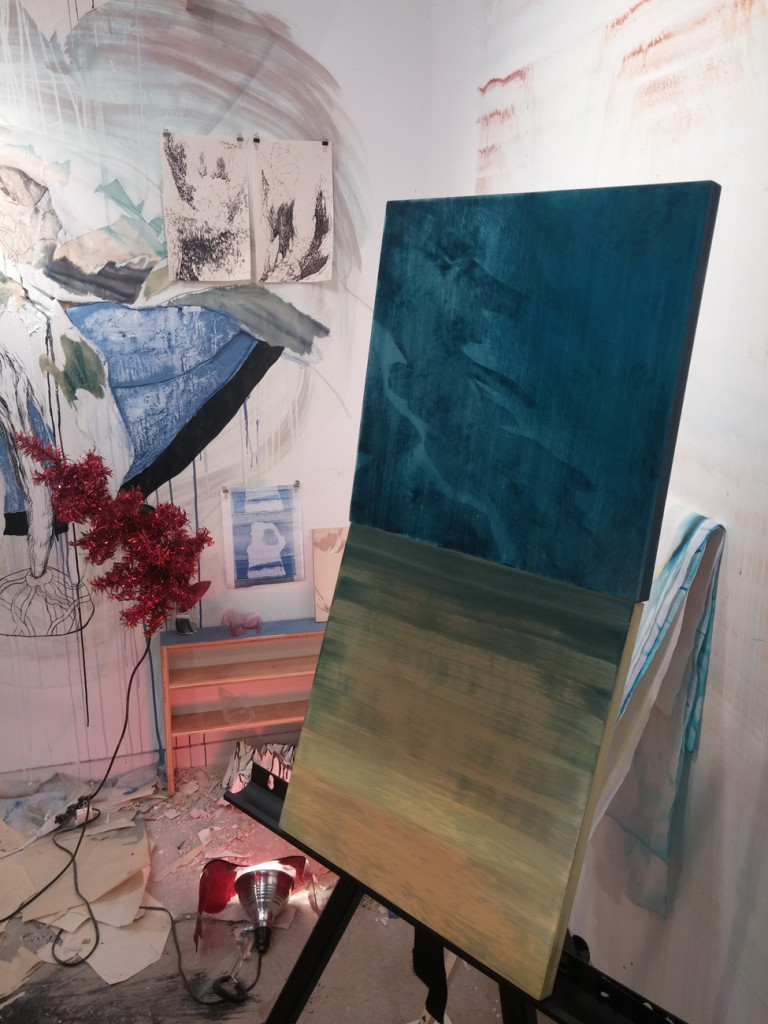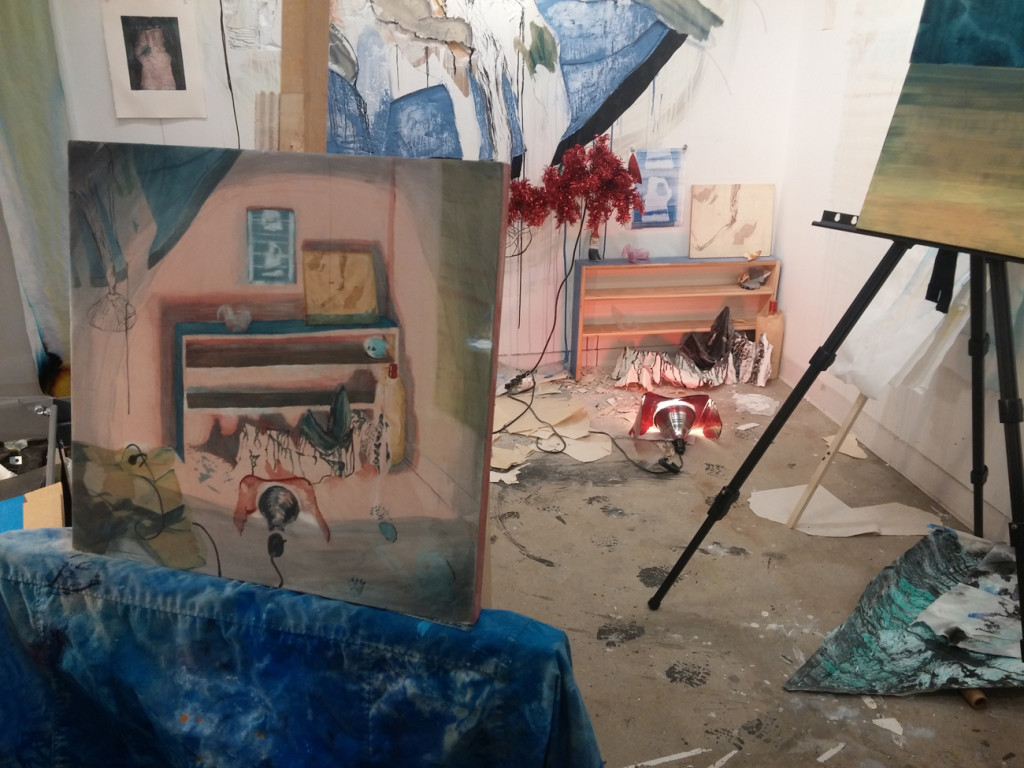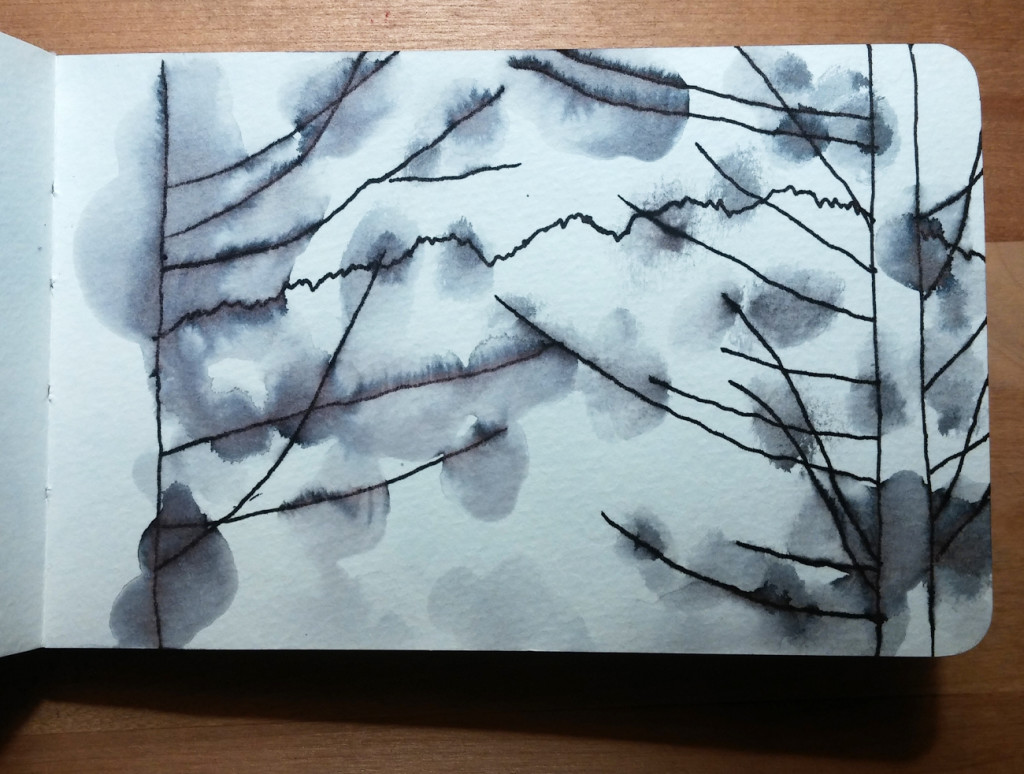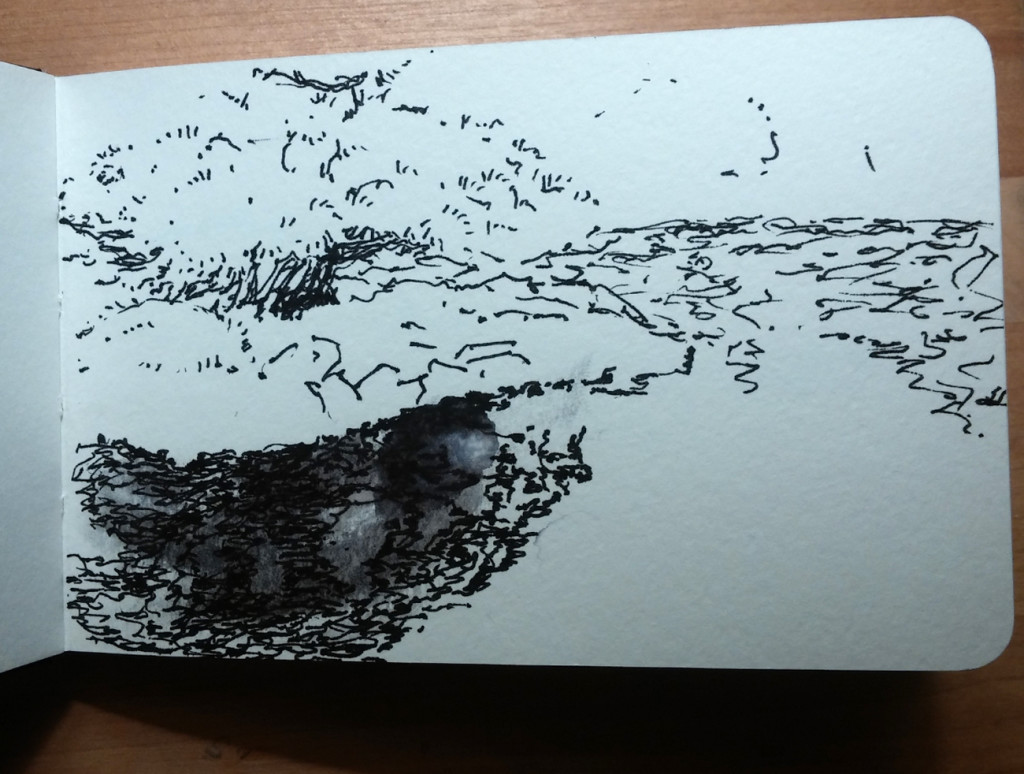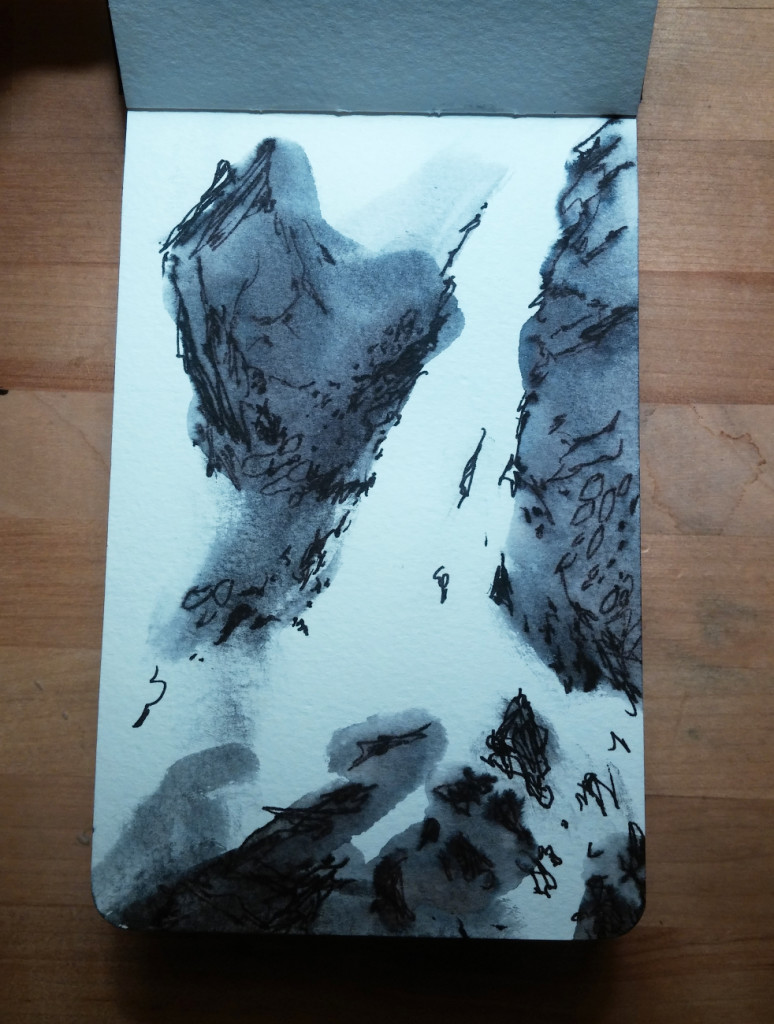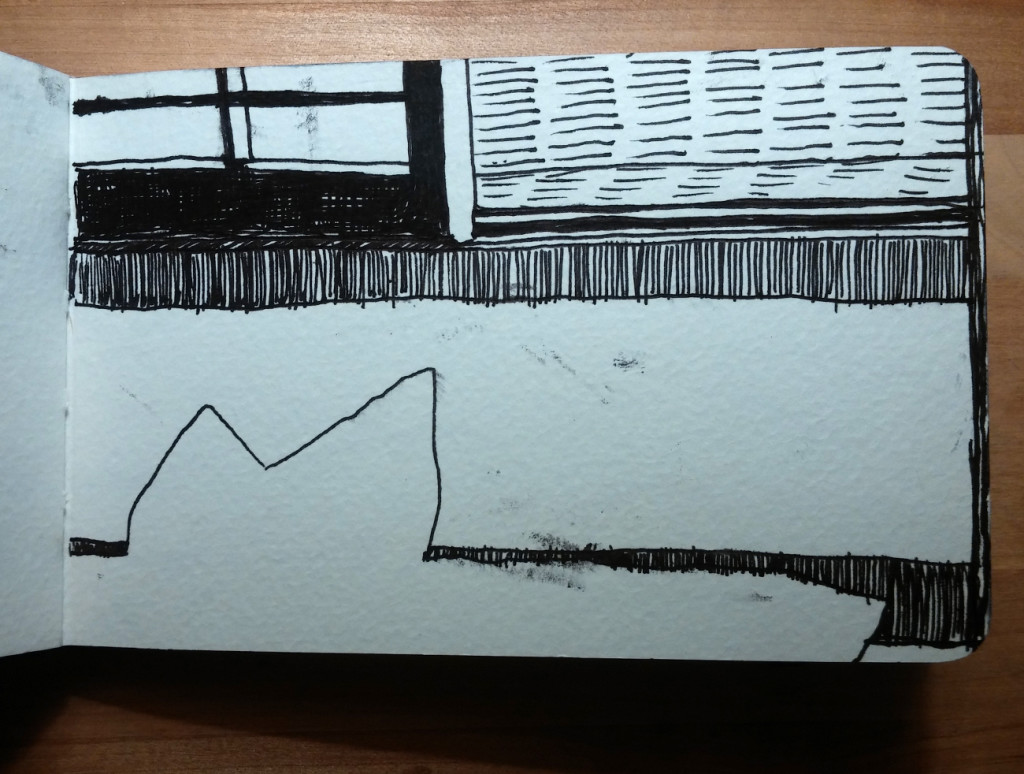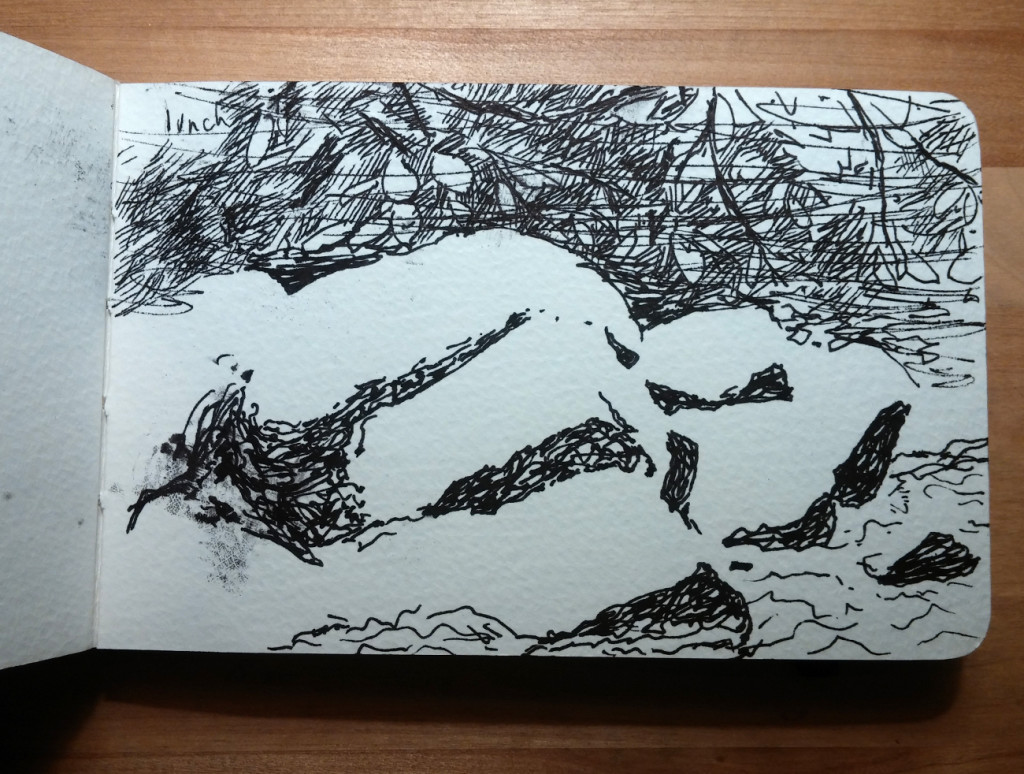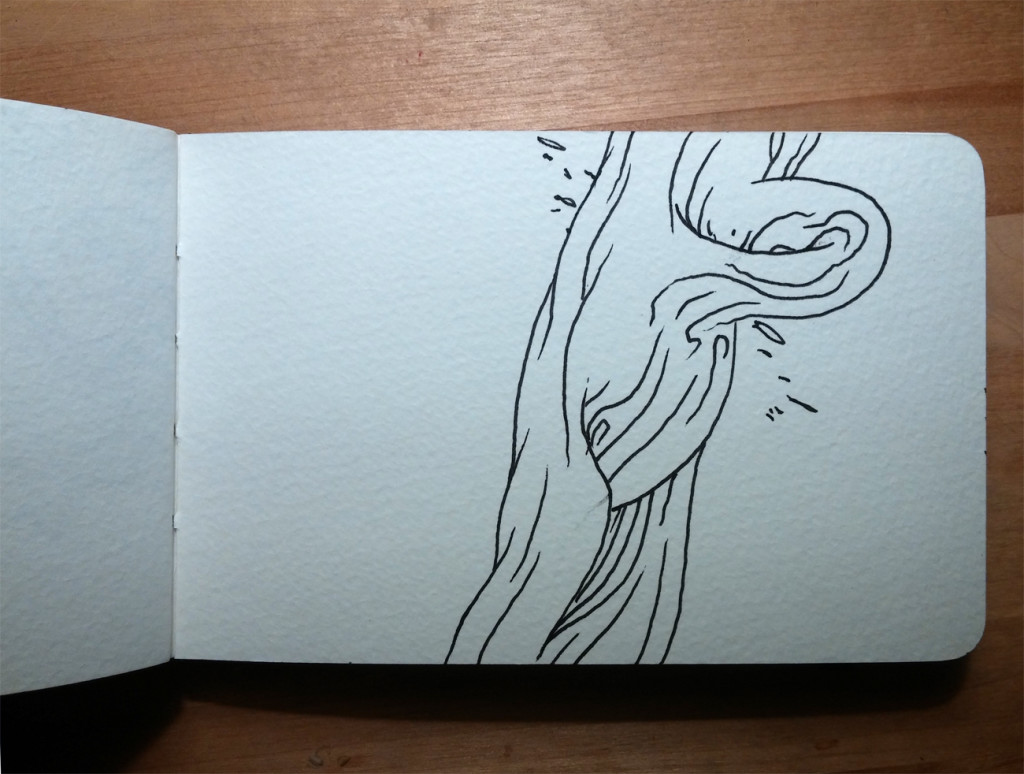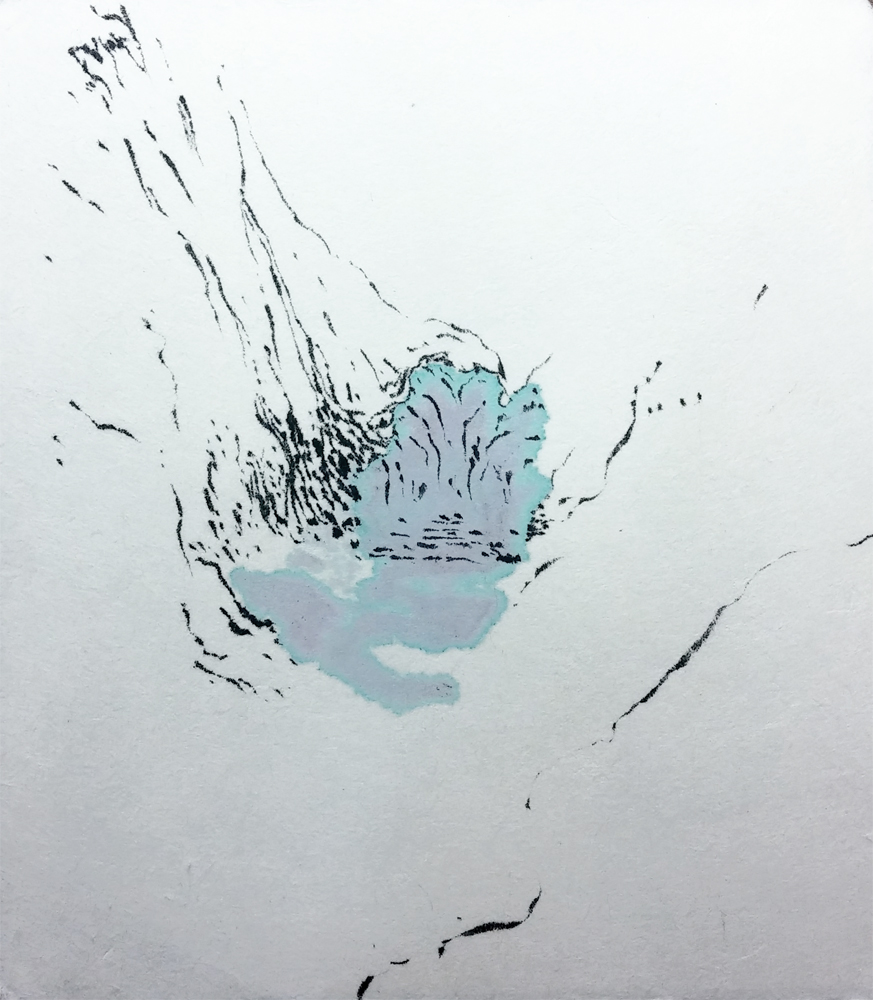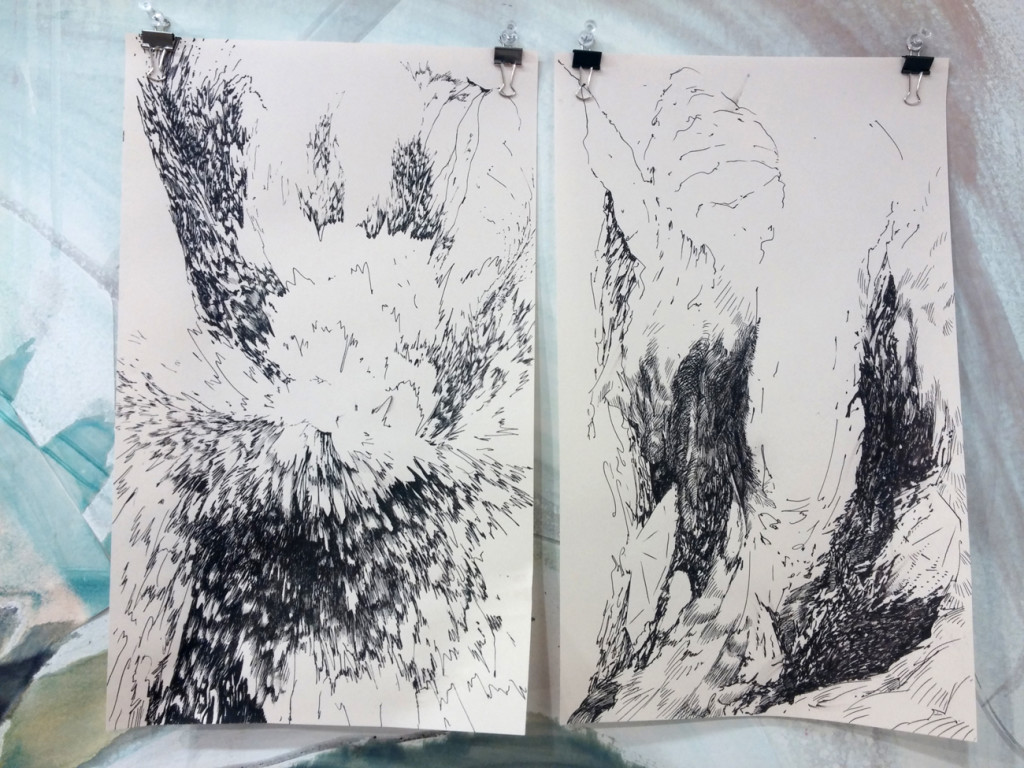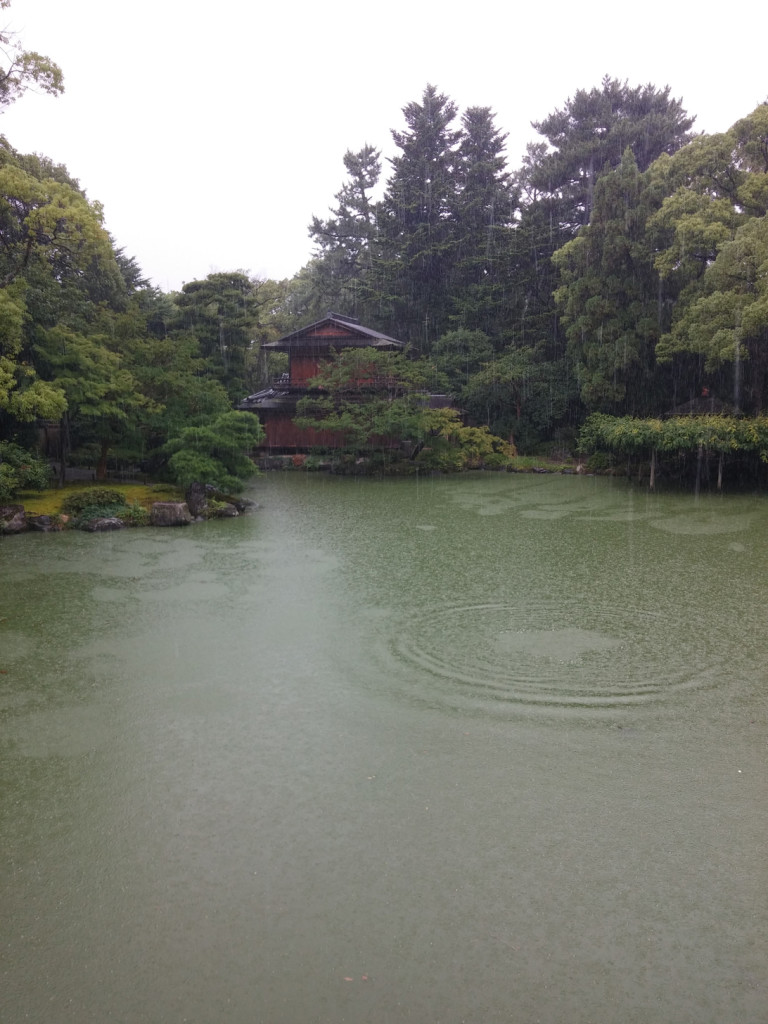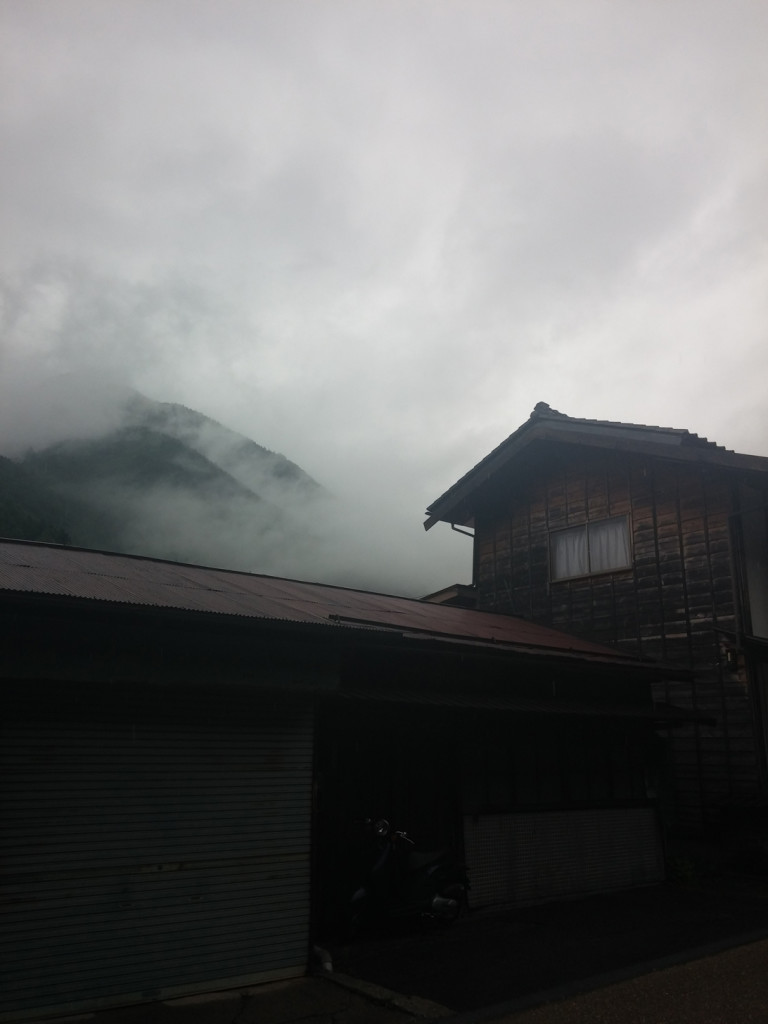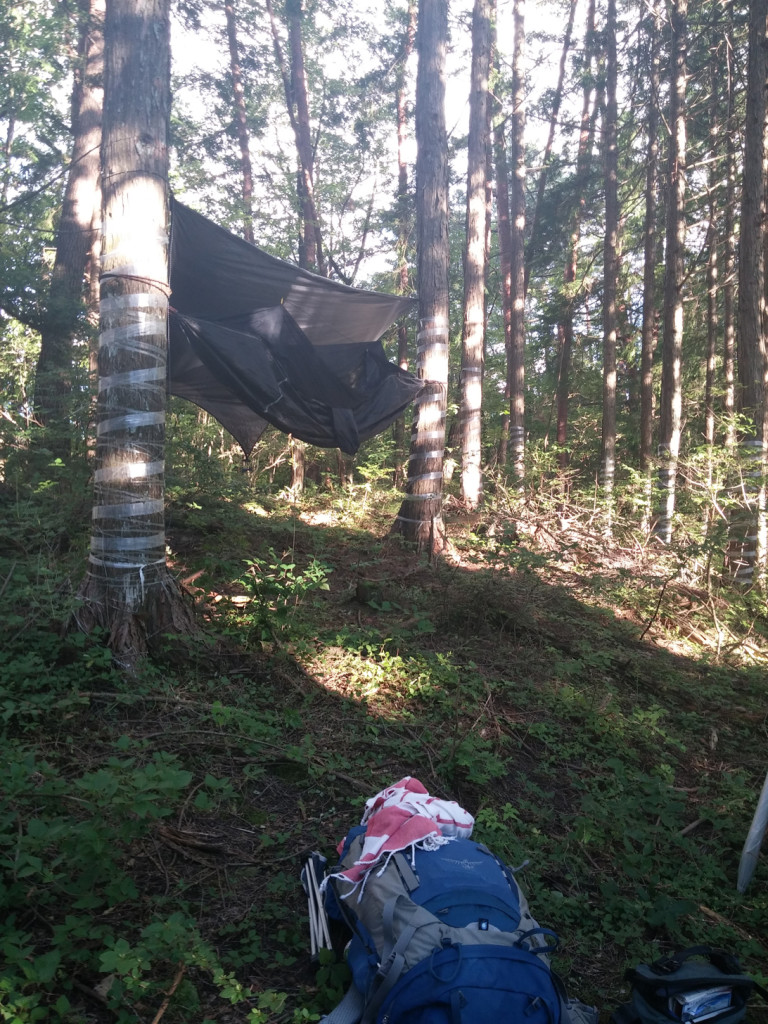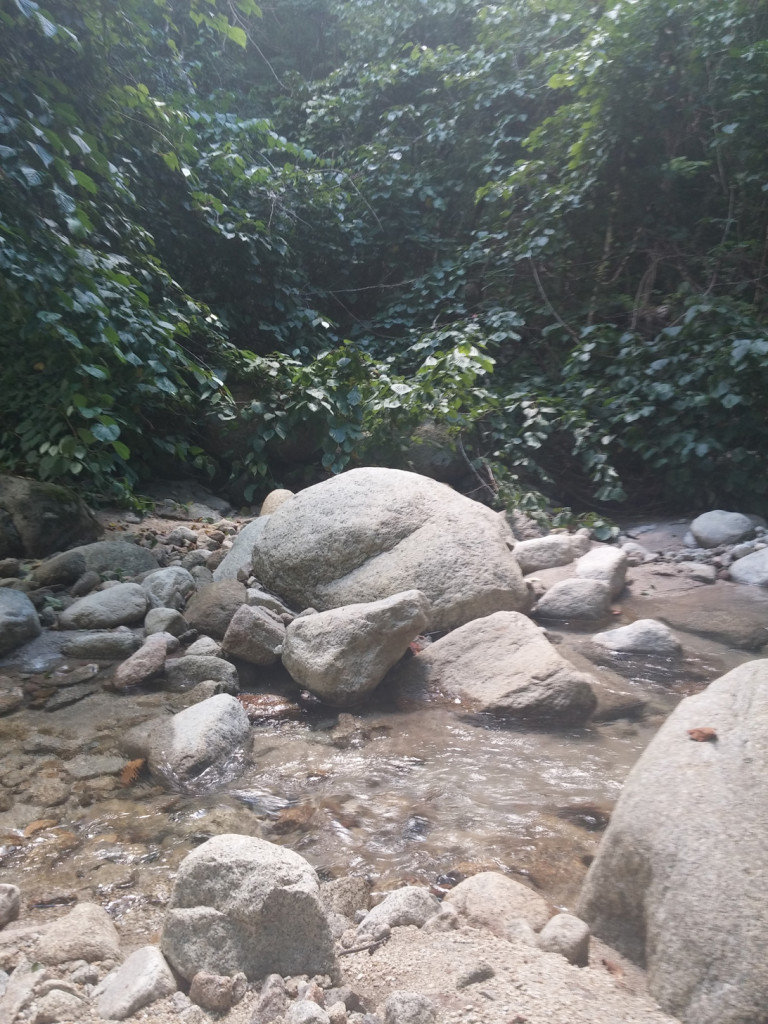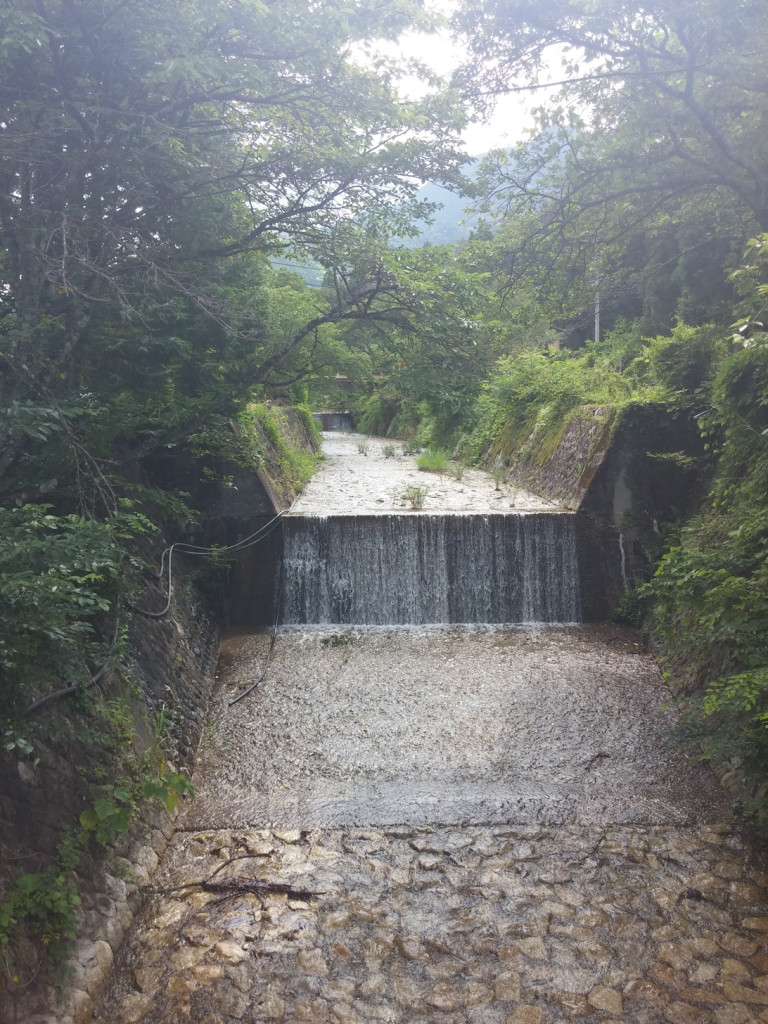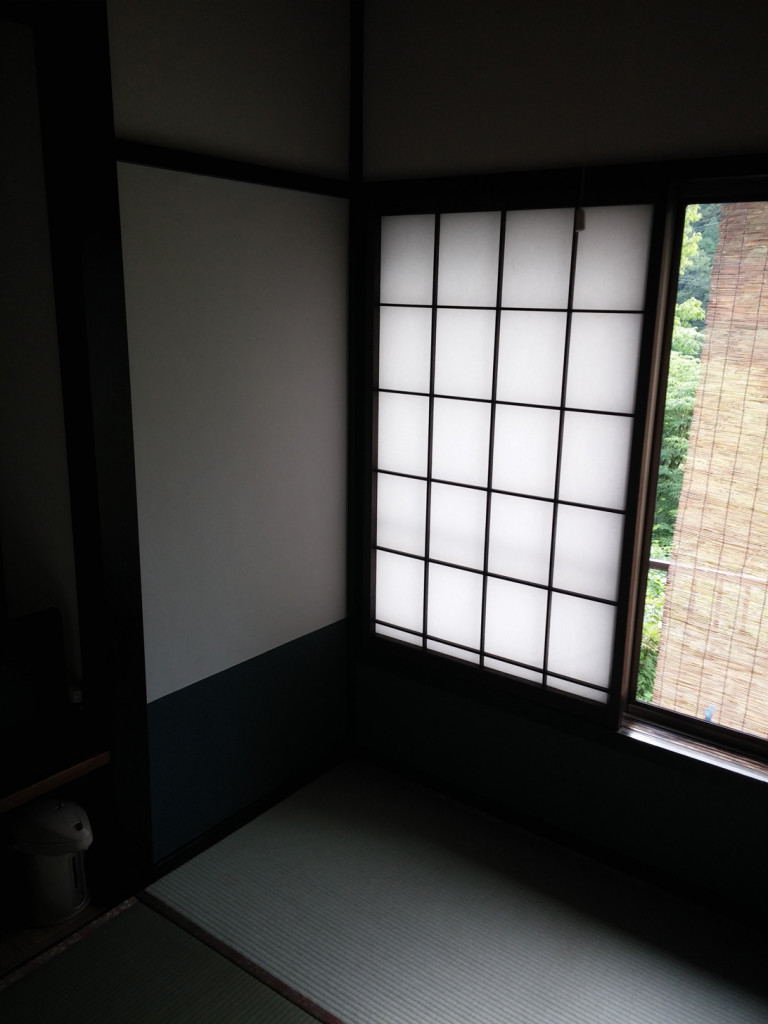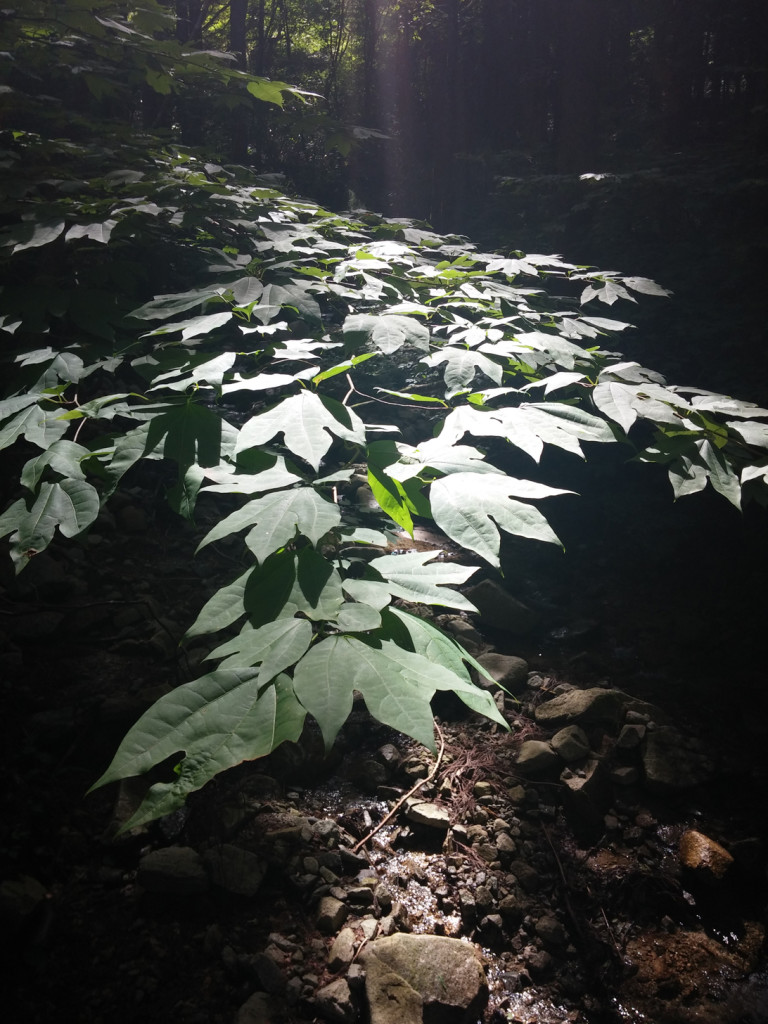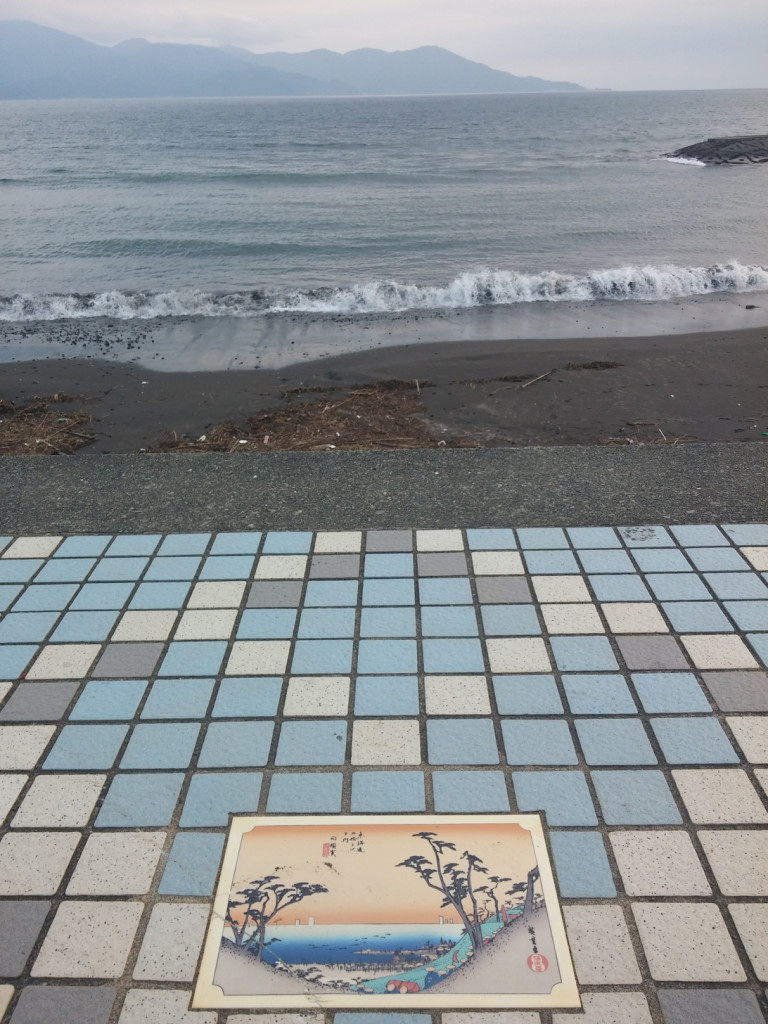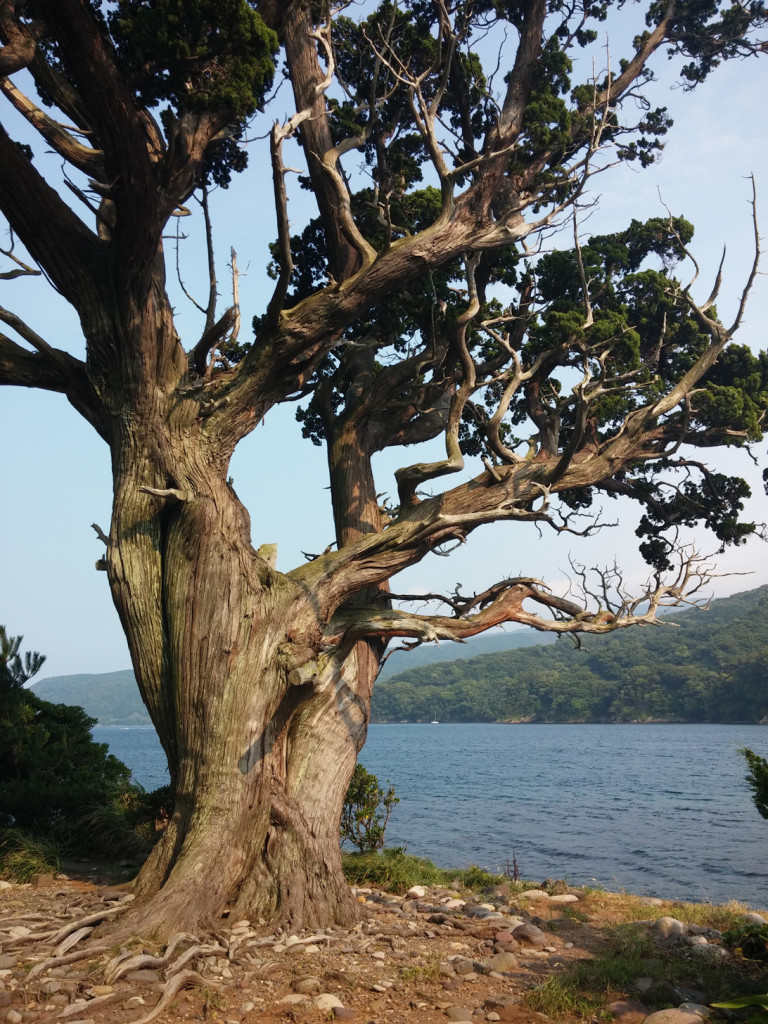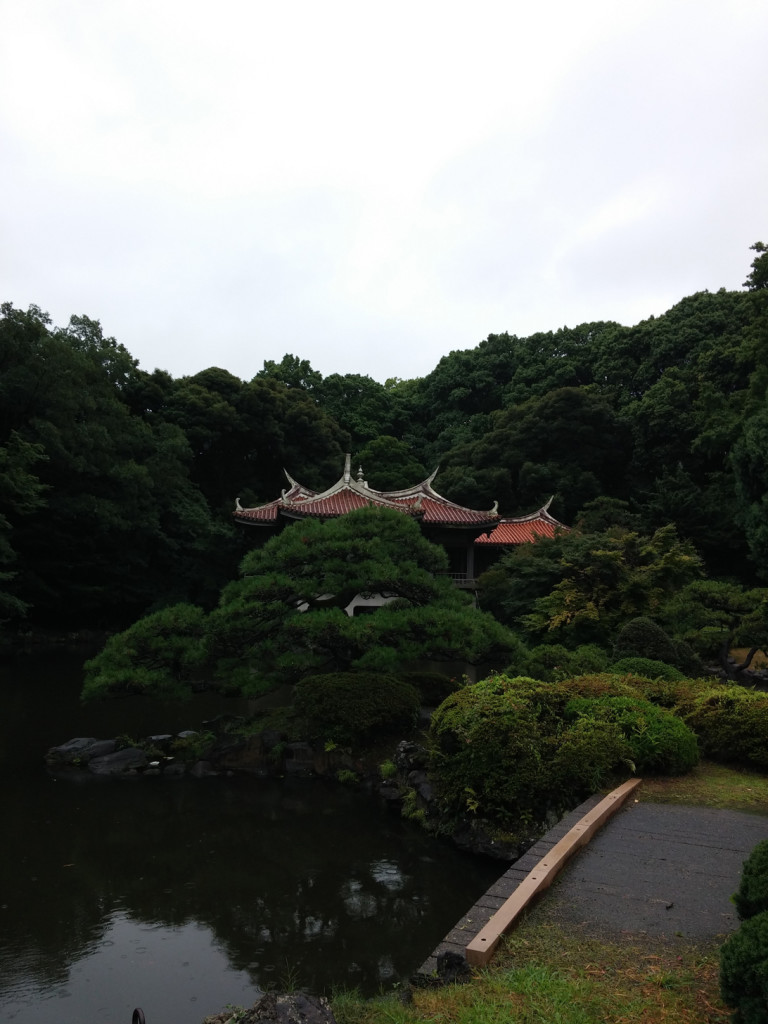Joe Anthony-Brown
Grant awarded Spring 2015
I applied for this grant to go to Japan and follow in the footsteps of Ando Hiroshige, very literally. In fact I had a variety of goals set out, but the meat of this trip was a hike along a portion of the Nakasendo trail: a narrow pass through the mountains of the Kiso Valley. The Nakasendo, also called the Kisokaido, was a road linking Tokyo and Kyoto dating back to the medieval era, and much of it still is, except now lined with major highways. Hiroshige produced a series of woodblock prints whose title is translated as, “The 69 Stations of the Kisokaido Road.” He walked this road and made paintings of scenes at the various villages and cities along the way. These were then made into a series of 69 woodblock prints, which are now canonical in the history of art.
My interest in Japanese printmaking stems from my early fascination with Japanese comics and video games. In Japanese comics, in contrast to western comics, there is an emphasis on the creation of a mood, or a total feeling of a scene, rather than a single picture of a single moment. The panels in the comic will jump from one aspect to another of a single moment in time. This creates a much more full sense of the way a certain place feels in addition to how it looks.
Hiroshige’s woodblocks are of a type called “ukiyo-e,” which translates to “pictures from the floating world.” These prints came into fashion in the mid-1800’s all over Japan and there are a large number of ukiyo-e artists that produced prints from the 1850’s into the early 1900’s. The name derives from the buddhist concept of the impermanence of the physical world we live in, the “floating world.” Generally the subjects were meant to entertain and/or inform the mass public: scenes of bathhouses, night life, porn, geishas, travel diaries, fables, ghosts, demons, war… They often have many different scenes happening at once, or provide wide angled contexts to particular scenes, presenting a mood more so than an event. I hadn’t realized until this trip how much the aspects of Japanese comics and video games that drew me in are paralleled in the ukiyo-e tradition. Hiroshige specifically interested me. His prints have been in my life for a long time. My great grandfather was an American Consul in Tokyo and a collector of ukiyo-e. His collection is displayed in the homes of my close relatives. Much of his collection consists of Hiroshige’s work, and a couple of these are from the “69 Stations…” series. I chose a very specific portion of the Nakasendo to hike. Much of the original road that still connects Tokyo and Kyoto is now lined with major highways, however the portion of the old road that runs through the Kiso Valley is too windy and narrow to build one. There is a minor roadway and train tracks that run through the valley, but the original pass is still there, snaking through the mountains. I spent 3 nights and 4 days on this path and made drawings of the scenery, as Hiroshige had. I stayed at a traditional Japanese guest house in a small village after my first day of hiking, and the next two nights I slept in a hammock in the forest. My experiences during these days and nights are recorded in writing and sketches, and have been the subject of much of my work since returning. While this trek was the main point of going to Japan, I had a variety of important encounters in other places too. I went to an ukiyo-e museum in Tokyo, in addition to a more thematically specific “Tokaido-Hiroshige” museum in a small town a few hours away. At the Tokaido-Hiroshige museum I met the curator, who is also a painter, and we talked and ended up exchanging artworks! The painting he gave me is now featured in a story I’m writing. I went on a 30 mile bike ride along the southern coast of Honshu, looking for a beach, only to find a wild rocky coast and ancient gnarled cedar trees. Which I drew and photographed and will turn into paintings. I sat in a mansion built in the Edo period in Kyoto, watching a bright green pond while the edge of a typhoon dumped rain into it. I went to the International Manga museum and looked at the first issue of Astro Boy ever published. I had tea with a lacquerware maker and he showed me his studio and how he makes things. These experiences, some more directly than others, continue to affect my work in a variety of ways, through remembered moods, colors, shapes, and chance encounters. This trip has been an inspiration and I thank those that made it possible.
